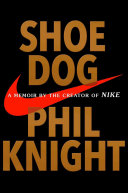

Knight's narrative emphasizes that the entrepreneurial journey is filled with ups and downs. He reflects on the personal growth he experienced along the way, the friendships he forged, and the passion that drove him. This idea encourages readers to appreciate the process of building a business rather than solely focusing on the end goal. It serves as a reminder that the experiences gained, relationships built, and lessons learned are invaluable parts of the entrepreneurial experience.
Continue readingPhil Knight, the founder of Nike, emphasizes the importance of passion and persistence throughout his journey. The book illustrates how his love for running and desire to create a better running shoe fueled his determination to overcome numerous obstacles. Knight faced skepticism from investors, challenges in manufacturing, and fierce competition. However, his unwavering commitment to his vision kept him moving forward. This idea resonates with entrepreneurs and innovators, showcasing that success often requires relentless effort and a deep-seated passion for one's work.
Continue readingKnight's story is filled with failures and setbacks, from financial struggles to product defects. Instead of being discouraged, he viewed these experiences as valuable lessons. Each failure taught him something new, whether about business operations, marketing strategies, or team dynamics. This perspective on failure is crucial for anyone pursuing a career in entrepreneurship or innovation. It highlights the importance of resilience and adaptability in the face of challenges, encouraging readers to embrace their failures and learn from them.
Continue readingThe success of Nike was not solely due to Knight's vision; it was also the result of the talented individuals he surrounded himself with. The book details the relationships Knight built with his early team members, including Jeff Johnson and Bill Bowerman. These partnerships were instrumental in developing innovative products and marketing strategies. Knight's emphasis on collaboration and trust within his team underscores the importance of building a strong, cohesive group of people who share a common goal. This idea is critical for anyone in a leadership position seeking to inspire and motivate their teams.
Continue readingInnovation is a recurring theme in 'Shoe Dog.' Knight and his team constantly sought to improve their products, whether through better materials, design, or performance. The creation of the iconic Nike Air technology is a prime example of how innovation can set a brand apart from its competitors. This idea serves as a reminder that in today's fast-paced business environment, staying ahead requires continuous innovation and a willingness to take risks. Readers are encouraged to foster a culture of creativity within their organizations to remain competitive.
Continue readingNike's success is not just about the products; it is also about the brand. Knight understood early on that creating a strong brand identity was crucial for long-term success. The book discusses the evolution of the Nike brand, including the iconic 'swoosh' logo and memorable advertising campaigns. This focus on branding highlights how a well-defined identity can resonate with consumers and build loyalty. For entrepreneurs and marketers, this idea emphasizes the need to invest in brand development as a key component of business strategy.
Continue readingThroughout the book, Knight details the numerous legal and financial hurdles he faced while building Nike. From negotiating contracts with suppliers to dealing with trademark issues, these challenges were significant. Knight's experiences illustrate the importance of understanding the legal and financial aspects of running a business. This idea serves as a cautionary tale for entrepreneurs, reminding them to be well-informed and prepared to navigate the complexities of business operations.
Continue reading